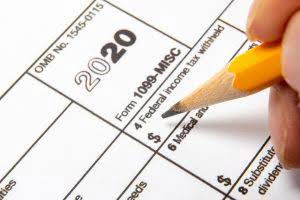Content
- Accounts Receivable Turnover Ratio:
- What Does Days Sales Outstanding Dso Mean?
- Construction Contracts: Pros And Cons Of A Cost
- Days Sales Outstanding Dso Calculation And Definition
- What Are The Other Metrics To Analyze Along With The Dso?
- How To Calculate Days Outstanding For Overdue Invoices In Excel?
- Define Customer Payment Terms
- Grow Your Business By Mastering Your Dso

In this example you can see, how to calculate the average time, in days, for which the receivables are outstanding. This will help you to determine if a change in receivables is due to a change in sales, selling terms, or other factors. If an investor wants to compare several businesses’ cash flows, these companies should be in the same industry and preferably have revenue numbers as well as business models that are similar. It could be a problem with customer satisfaction or possibly the result of giving longer payment times to improve sales. It should be noted that if the DSO resultant is very close to the payment day given to the customer, the credit policy of the company is too stringent.
To calculate your DSO for a given period you’ll need to know your total receivables and total net credit sales. To determine your net credit sales, take your total sales made on credit terms and subtract any returns or sales allowances. With this increased pressure to supply analytics and insights on working capital, you’ll want your finance teams to have easy access to this data. You can track DSO automatically with accounts receivable automation software, meaning less work for you. This metric defines the best possible number of days it takes for a business to collect its receivables. It’s theoretically calculated for an internal comparison between the DSO and BPDSO. Based on this, the senior management establishes the best method for benchmarking A/R.
DSO is often driven by your customers’ ability to pay their invoices on time. Therefore, any effort to improve DSO must address customer credit risk. A good first step is do determine appropriate parameters for acceptable customer credit risks. A company can then use that criteria to ensure that all new customers do not represent an unacceptable risk of slow payment or non-payment. Companies can also extend this criteria to existing customers, starting with those that have been slow to pay. The average number of days it takes for a company to collect outstanding receivables.
Then multiply that number by the number of days you want to measure. If your company’s DSO is high, this indicates that you are waiting a long time to collect payment from your customers. A low DSO, on the other hand, indicates that your business is effiicent in collecting its accounts receivable. Your business is promptly getting the money it needs to create new business. Credit departments and credit managers love their key performance indicators . One of the most telling KPIs for credit professionals is days sales outstanding, or DSO.
Pricing will vary based on various factors, including, but not limited to, the customer’s location, package chosen, added features and equipment, the purchaser’s credit score, etc. For the most accurate information, please ask your customer service representative. Clarify all fees and contract details before signing a contract or finalizing your purchase. Each individual’s unique needs should be considered when deciding on chosen products.
Accounts Receivable Turnover Ratio:
We also reference original research from other reputable publishers where appropriate. You can learn more about the standards we follow in producing accurate, unbiased content in oureditorial policy. DSO may vary consistently on a monthly basis, particularly if the company’s product is seasonal. If a company has a volatile DSO, this may be cause for concern, but if its DSO regularly dips during a particular season each year, it could be no reason to worry.
This is simple enough to calculate for your company (or even your competitors’, if they have public accounts). Let’s say a company has an A/R balance of $30k and $200k in revenue. Investopedia requires writers to use primary sources to support their work. These include white papers, government data, original reporting, and interviews with industry experts.
- If you’re interested in discovering more about this, or want to learn more about how you can grow faster with better, instant prediction information.
- Some AR automation tools allow customers to make payments from their account on a set timeline automatically.
- If customers have a history of paying severely late, it could be a sign that you should stop extending payment terms to them.
- Customers are much more likely to settle outstanding payments if your company is helpful and accessible, yet serious.
- To calculate your DSO for a given period you’ll need to know your total receivables and total net credit sales.
They now are indicating they intend to pay two of the large($2,500+) projects because… We envision a world where no one in construction loses a night’s sleep over payment. What constitutes a good or bad level of DSO may be determined by your experience, but generally a DSO more than 30% greater than standard payment terms deserves collection action. Stay updated on the latest products and services anytime, anywhere. Our Highly Experienced Team recommends Products or Services after thoroughly researching them to ensure we provide an unbiased, comprehensive solution for your Home or Business.
What Does Days Sales Outstanding Dso Mean?
Abbreviated as DSO, the https://www.bookstime.com/ metric is used to show the average number of days it takes to collect a payment after the company has made a sale. This metric is usually determined for a yearly, quarterly, or monthly period. The number of days outstanding is subject to your customers’ ability to pay their invoices on time. While sales are important, if your company isn’t carrying out the right credit evaluations in the first place, you’ll struggle further down the line.
Days sales outstanding, otherwise known as DSO, is an essential formula for measuring how efficient a company is at retrieving outstanding payments. If you’re generating healthy sales but it’s taking your company too long to see the fruits of its labour, your cash flow is going to dry up, fast. DSO metrics are heavily influenced by the payment terms a company extends to its customers. Those payment terms must carefully balance the company’s own DSO goals against common industry practice, as well as customer needs and expectations. They also improve the likelihood that you’ll get the rest of your money, on time, without having to chase a client for payment.

If you ask any CFO out there, they will tell you that cash flow is the heart of a business. For that purpose, companies use DSO or Days Sales Outstanding to better understand their cash flow or liquidity.
Construction Contracts: Pros And Cons Of A Cost
Liquidity ratios are a class of financial metrics used to determine a debtor’s ability to pay off current debt obligations without raising external capital. “What is a good days sales outstanding ratio?” Accessed March 3, 2021. A sharp increase in DSO can cause a company serious cash flow problems.
- Therefore, companies may need to implement specific incentives and penalties to make sure salespeople and sales managers adhere to the company’s customer credit requirements.
- In the Payt platform you can see at a glance how your DSO is progressing .
- To calculate the DSO ratio, take your total accounts receivable and divide it by your total credit sales, then multiply that by the number of days you’re measuring.
- She is passionate about telling compelling stories that drive real-world value for businesses and is a staunch supporter of the Oxford comma.
- When measuring DSO, only credit sales are taken into account, and cash sales are excluded.
To calculate the traditional DSO for both companies, divide $7,000,000 by the average daily sales for the last 12 months of $100,000. Therefore, easy and quick conversion of net credit sales into cash is preferable. AR automation software can make it much easier for your team to identify these at-risk customers.
Days Sales Outstanding Dso Calculation And Definition
This means company A has recovered its dues in 26.6 days and that its DSO is 26.6 days. That’s great because if a business has DSO below 45 days, it indicates a low DSO. A business with low DSO implies it has promptly-paying customers and that its cash flow is stable.

Companies provide goods and services on a credit basis and later collect the payments for those. DSO is the average number of days it takes to make that collection. It is important for a company to Days Sales Outstanding collect the outstanding account receivables in a timely manner. According to the time value of money principle the more a company waits for receiving the moment the more they lose out on profit.
What Are The Other Metrics To Analyze Along With The Dso?
You can make the payment experience even more convenient for customers when you introduce them to the option to set up autopay. Some AR automation tools allow customers to make payments from their account on a set timeline automatically. This way, customers have less to think about and you know for sure you’ll be paid on time. Discounts for early payments are a great way to incentivize customers to pay faster.
There are a couple of reasons your days sales outstanding could be trending higher. It could be an indication that customer satisfaction is low and as a result, customers are taking their time to pay you. In that case, your sales team is likely extending credit to customers they shouldn’t. Every business is different and, consequently, there is no set DSO amount that indicates good or bad accounts receivable management.
Define your ideal client and be wary of red flags during the interview process. I could’ve avoided such a scenario in my own business had I paid attention when talking to this one client. By tracking these figures monthly, you can identify if they’re increasing over time against your benchmarks and that of the industry. Dawn Killough is a construction writer with over 20 years of experience with construction payments, from the perspectives of subcontractors and general contractors. Dawn has held roles such as a staff accountant, green building advisor, project assistant, and contract administrator. Her work for general contractors, design firms, and subcontractors has even led to the publication of blogs on several construction tech websites and her book, Green Building Design 101. Contractors and material suppliers should calculate and measure their collection efforts on a regular basis.
Incorrect charges, invoices that do not reflect agreed-upon discounts, or the wrong mailing address are just a few examples of common errors that can delay payments. Overall, companies should focus on DSO reductions that are both attainable and sustainable based on the realities of the business. Accounting and finance executives can also use this data to make the case for reducing DSO to senior management and the various departments whose cooperation is necessary. Any effort to reduce DSO must begin withgathering data on a company’s current DSO status and creating a benchmarking analysis that shows how that level of DSO compares to peers and competitors.
By analyzing this metric, a company/ business can round up the average number of days it takes for their customers to pay invoices. Days Sales Outstanding is the number of days it takes to collect your receivables in a given amount of time. It is an important financial indicator as it shows both the age of a company’s accounts receivable and the average time it takes to turn those receivables into cash. DSO reveals how many days worth of sales are outstanding and unpaid within a specific period.
How Days Sales Outstanding Dso May Affect Your Companys Financial Health?
A high DSO may result in a cash crunch while a very low DSO may affect the customer base. Companies with very low DSO often lose clients due to its strict account receivable collection policy. A well-maintained DSO ratio reflects the efficiency of the collection department. It is better to judge the efficiency of the company’s cash flow management by considering the trend of the DSO. A trend reflects it much vividly than an individual DSO value. Days sales outstanding is the measurement of the average number of days it takes a business to collect payments after a sale has been made. In other words, it is the average length of time it takes a company to collect its accounts receivable .
As a “Rule of Thumb,” your DSO delinquent balances should not exceed 33% to 50% of the selling terms. If terms are 30 days, then an acceptable DSO or the “Safe Collection Period” is 40 to 45 days. A DSO receivable at 15 days past terms is a collection candidate. Remember, the less money that is being tied up in accounts receivable the more money that can be used for company investment or dividends. Reducing DSO is a relatively straightforward way to strengthen your company’s cash flow.
Grow Your Business By Mastering Your Dso
If you see your DSO rising for several months, look at your collection efforts and come up with ideas to improve payment rates. Calculating and tracking your DSO over time helps you spot trends in your customer’s payment practices. Generally, higher DSO numbers lead to cash flow problems, because you’re having to wait longer for payment. In addition, the creditworthiness of the company’s customers affect the Days Sales Outstanding.
Companies will also monitor their days sales outstanding and take note of any changes as indicators of the changing efficiency of their AR processes. As you can see, it takes Devin approximately 31 days to collect cash from his customers on average.
